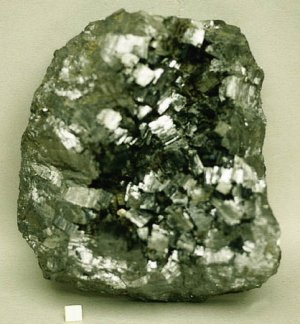tantalum

Tantalum. Credit: Smithsonian Institution.
Tantalum (Ta) is a very hard, dense, gray metallic element. It lies in group VB of the periodic table and is a transition element. It is found in the mineral columbite along with niobium, which it resembles closely. Tantalum oxide is separated by solvent extraction and reduced to the metal.
Tantalum is highly inert and exceptionally resistant to chemical attack below 150°C. It is ductile, easily fabricated, a good conductor of heat and electricity, and has a high melting point. The most common isotope is 181Ta (99.988%).
The major use for tantalum, as tantalum metal powder, is in the production of electronic components, mainly electrolytic capacitors. Major end uses for tantalum capacitors include portable telephones, pagers, personal computers, and automotive electronics. In alloys with other metals, tantalum is also used in making carbide tools for metalworking equipment, nuclear reactor parts, light-bulb filaments, lightning conductors, some surgical instruments, and in the production of superalloys for jet engine components.
Australia, Brazil, and Canada are the major producers of tantalum mineral concentrates.
| atomic number | 73 |
| relative atomic mass | 180.948 |
| relative density | 16.6 (20°C) |
| melting point | 3,017°C (5,463°F) |
| boiling point | 5,458°C (9,856°F) |


